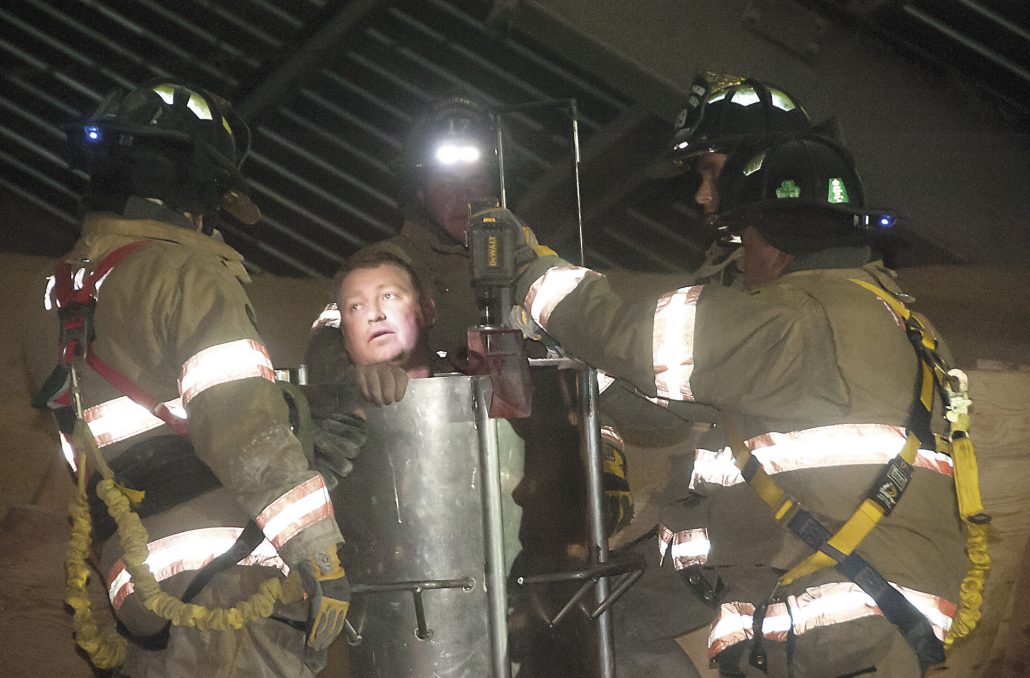
A group of 2 dozen Tracy firefighters had their hands full Monday as they conducted grain bin training in town
By Per Peterson
More than five minutes had passed since Tracy firefighters extracted Assistant Fire Chief Mike Erbes from certain peril Monday evening. He could still feel the pressure on his legs — pressure that came from being surrounded by an endless amount of stored corn.
Erbes wasn’t actually in any immediate danger. He was playing the lead role as a victim in a grain bin rescue training drill, put on by the fire department and CHS of Tracy.
“It’s like quicksand, and it’s very, very tight when they start working around you,” Erbes said. “There’s a lot of pressure on you. This can happen at anytime, and we’re the ones that get called, so we want to be ready. This happens more often than people realize, and most of the time it ends bad.”
Erbes said every grain bin rescue is unique because of how the corn reacts to every movement differently.
“You try to make it so you don’t put more pressure on the victim,” he said. “This is a lot different than what we’ve done in the past; we’ve always done it in semis before. Here, you had to get to (the victim). It’s a whole different challenge.”
The rescue process in such a situation is anything but simple. And it doesn’t happen quickly, either. The training included a dozen firefighters who systematically made their way up the mountainous pile of corn. They formed a human assembly line, handing up all the tools they would need to extract Erbes.
“There are 24 firemen here tonight and every one of them is doing something,” Tracy Fire Chief Dale Johnson III said.
Those items included numerous pieces of plywood slabs, six curved, metal plates (or cofferdams), along with a device to pound them into the corn, and a rescue auger that was used to continuously remove corn while firefighters pounded the cofferdam down farther and farther to encompass the victim as thoroughly as possible. The steel pieces, which have built-in steps on both sides, were purchased by CHS and donated to fire departments in towns that CHS has a presence in. They are all interchangeable, so fire departments can use each other’s if they need to create a larger area around a victim.
See this week’s Headlight Herald for more on this article.
